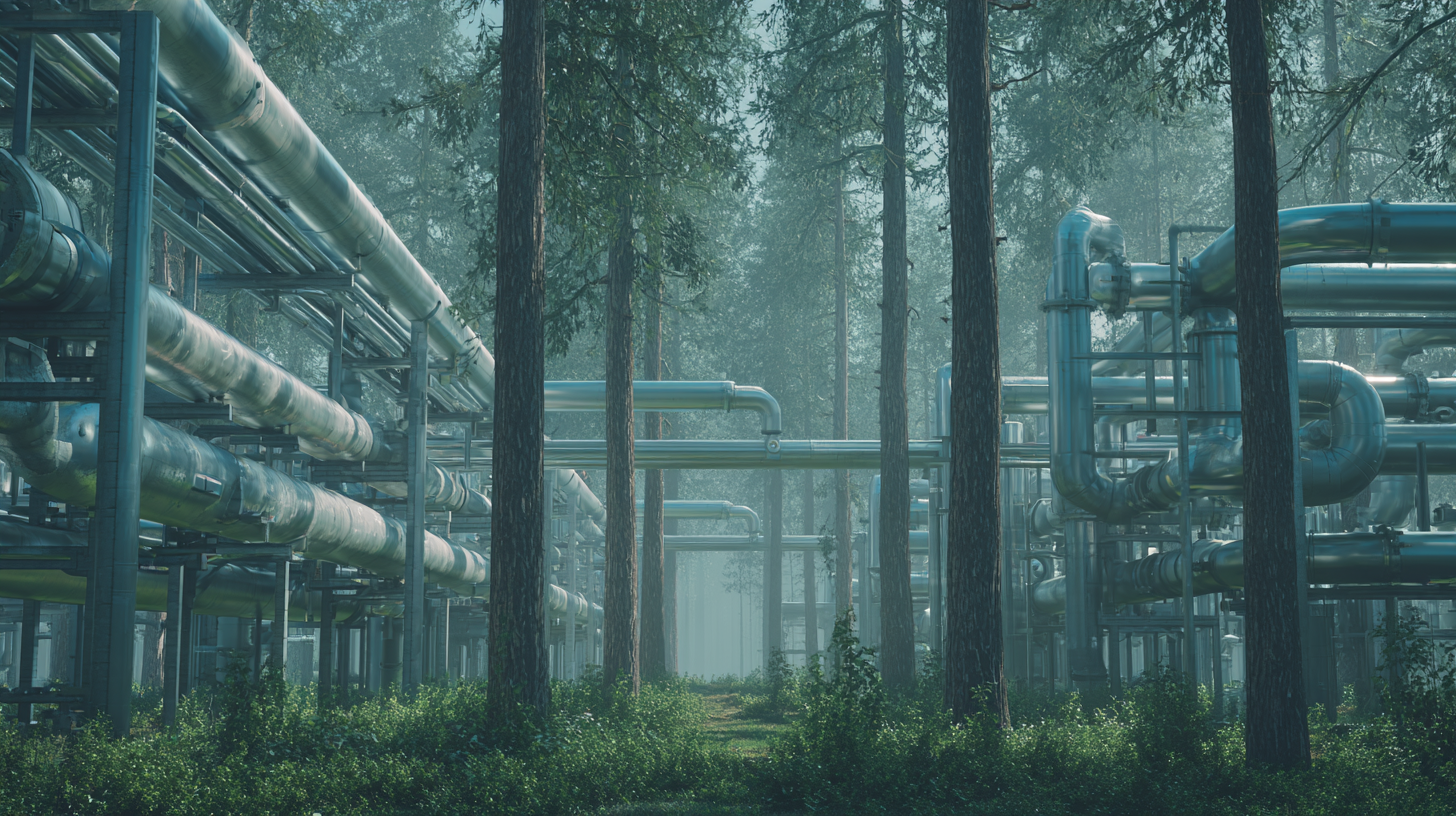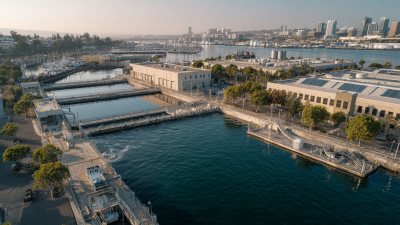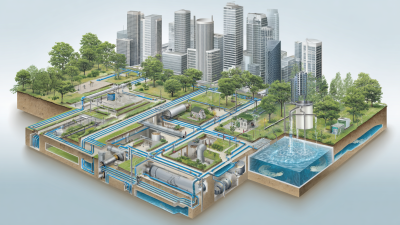How Water Systems Impact Sustainability and Our Future Living Environments
 Water systems play a critical role in shaping sustainable living environments and addressing the challenges posed by
climate change and urbanization. According to the United Nations, approximately 1.2 billion people currently live in areas of physical water scarcity, while 500 million are approaching this situation. As cities continue to grow, effective water management becomes essential, impacting everything from agriculture to public health.
Water systems play a critical role in shaping sustainable living environments and addressing the challenges posed by
climate change and urbanization. According to the United Nations, approximately 1.2 billion people currently live in areas of physical water scarcity, while 500 million are approaching this situation. As cities continue to grow, effective water management becomes essential, impacting everything from agriculture to public health.
The World Economic Forum highlights that water-related crises rank among the top global risks, with the potential to disrupt food security and economic stability. Therefore, innovative approaches to water systems are vital for ensuring that urban environments are resilient and sustainable. By integrating advanced technologies, digital tools, and sustainable practices, we can enhance the efficiency of water systems, safeguard resources, and promote a healthier future for communities worldwide.
The Role of Water Systems in Enhancing Urban Sustainability
Urban sustainability increasingly relies on effective water systems that are integral to the health of our cities. Well-designed water management practices not only ensure an adequate supply of clean water but also promote efficient wastewater treatment and rainwater harvesting.
By integrating green infrastructure, such as permeable pavements and green roofs, urban areas can mitigate flooding, reduce heat islands, and enhance biodiversity. These practices create a resilient urban ecosystem that can adapt to climate change and reduce the environmental footprint of cities.
Moreover, the role of water systems in enhancing urban sustainability extends beyond environmental benefits. They contribute to social equity by providing all communities with access to safe water and sanitation. Sustainable water management fosters economic growth by supporting local businesses and attracting investments in green technologies. As cities increasingly face the challenges posed by population growth and climate change, the development of innovative and sustainable water systems will be crucial for creating livable environments that ensure the well-being of both current and future generations.
Challenges of Water Scarcity and Its Impact on Future Inhabitants
Water scarcity is becoming an increasingly pressing challenge that affects both current and future inhabitants of our planet. As urban populations surge and climate change intensifies, the availability of fresh water is dwindling in many regions. This scarcity not only threatens basic human survival but also compromises the sustainability of ecosystems that rely heavily on sufficient water supplies. Communities are facing unprecedented decisions regarding water use, leading to conflicts over this vital resource and highlighting the need for innovative solutions in water management.
The impact of water scarcity extends beyond the immediate need for drinking water; it shapes the very fabric of future living environments. As regions grapple with diminishing water resources, urban planning must adapt to incorporate efficient water usage and recycling systems. Sustainable habitat designs that prioritize water conservation and the use of alternative sources, such as rainwater harvesting, will be essential. Moreover, education and awareness about water preservation will play a crucial role in shaping a future where inhabitants live harmoniously with their water systems, ultimately fostering a culture of sustainability in response to the pressing challenges of our time.
Impact of Water Scarcity on Global Population (2023)
This chart illustrates the impact of water scarcity on different regions across the globe, highlighting the number of people affected and the percentage of the total population facing water-related challenges. As the global population continues to grow, the need for sustainable water systems becomes increasingly crucial for future living environments.
Innovative Water Management Techniques for Sustainable Living
Innovative water management techniques are crucial for fostering sustainable living environments as they address the increasing pressures on global water resources. One such technique is the implementation of rainwater harvesting systems, which capture and store rainwater for various uses, such as irrigation and even potable water supply. This not only reduces dependency on traditional water sources but also mitigates the risk of urban flooding, showcasing its dual benefits for communities and ecosystems.
Another significant approach is the use of greywater recycling systems. By treating and repurposing wastewater from sinks, showers, and washing machines, these systems conserve fresh water while promoting a circular economy within households. Moreover, smart irrigation technologies that leverage soil moisture sensors and weather forecasts help optimize water usage in agriculture, ensuring that plants receive adequate hydration without wastage. These innovative strategies highlight the importance of integrating technology with environmental stewardship, paving the way for a more sustainable future.
Integrating Green Infrastructure to Optimize Water Resources
Integrating green infrastructure into urban water systems is crucial for optimizing water resources and enhancing sustainability. Nature-based solutions (NbS) play a pivotal role in this integration, offering multifaceted benefits that address climate challenges while improving water security. For instance, urban green spaces not only mitigate flooding risks by absorbing rainwater but also contribute to lower urban heat islands, thus promoting healthier living environments. By employing innovative strategies that blend green and gray infrastructure, cities can create stormwater networks that effectively manage peak flows while minimizing inland flooding occurrences.

Moreover, advancements in technology, including the incorporation of machine learning and artificial intelligence, further enhance the ability to analyze and optimize these green infrastructures. These systems can predict rainfall intensity and adjust stormwater management strategies accordingly, ensuring resilient urban planning. As cities increasingly implement these sustainable practices, they can meet climate action goals while fostering ecological balance. Ultimately, this integration of green infrastructure is essential for creating adaptable and sustainable urban ecosystems that safeguard our future living environments.
The Intersection of Water Systems and Climate Resilience Strategies
The intersection of water systems and climate resilience strategies is increasingly critical as urban environments face heightened risks from climate change. Recent initiatives like UCLA's Urban Water Supply + Fire working group highlight the urgent need to address vulnerabilities within our water systems, particularly in their capacity to support communities during wildfire events. Effective management of urban water supply is not just about ensuring access to drinking water; it also involves maintaining pressure and availability during emergencies, which can significantly impact firefighting efforts and community safety.
Furthermore, innovative approaches to water resource management are vital for enhancing resilience against climate-related threats. Strategies such as improved green infrastructure and investments in water reuse systems can mitigate the effects of severe droughts and floods, reinforcing the stability of both ecosystems and urban areas. As stakeholders from various sectors, including health, environment, and disaster response, engage in dialogues to exchange best practices, the integration of sustainable water systems into climate resilience frameworks becomes paramount. This collaboration will pave the way for communities to adapt to changing environmental conditions while ensuring equitable access to essential resources.

Related Posts
-

Transform Your Life with the Ultimate Water System: Discover Healthier Hydration Today!
-

Exploring Innovative Wildfire Water Solutions to Protect Our Communities and Environment
-

Unlocking the Future: How Water Reclamation Systems Can Revolutionize Urban Sustainability
-

Understanding the Importance of a Reliable Water Testing System for Safe Drinking Water
-

Essential Guide to Understanding Water System Plumbing for Modern Homes
-

Innovative Water System Solutions for Sustainable Urban Development
